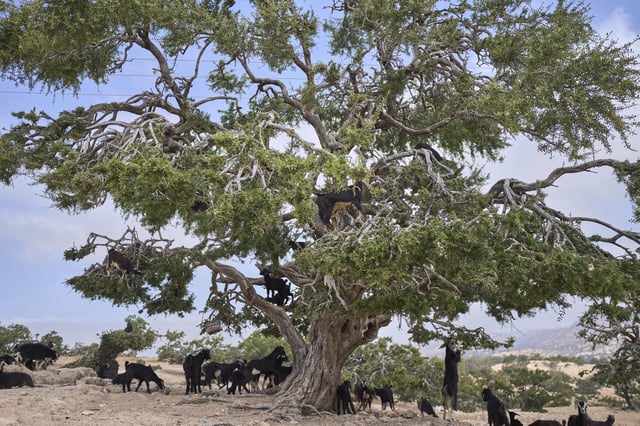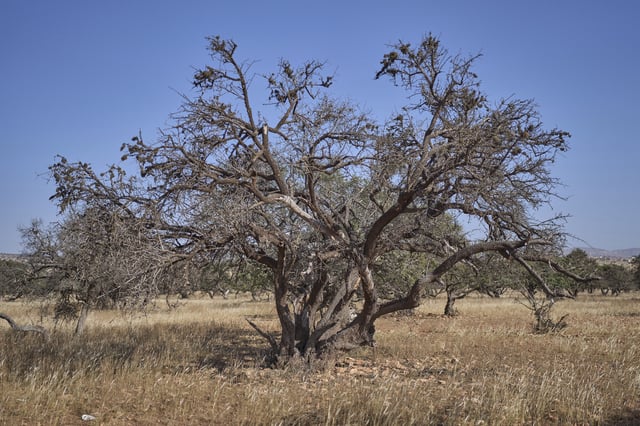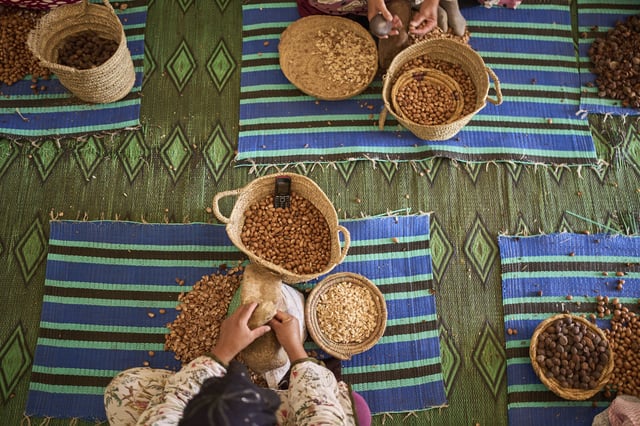Overview
- The Moroccan government’s 2018 argan reforestation project has yet to yield harvestable trees this year because of prolonged drought.
- Local cooperative workers earn about $3 for two days of labor per kilogram of argan oil while global retail prices exceed $60 a liter.
- Olvea controls approximately 70% of Morocco’s argan oil export market, limiting cooperatives’ access to fair pricing and international buyers.
- Upgraded storage centers set to open in 2026 are designed to help cooperatives hold their oil longer and negotiate directly with buyers.
- Argan forests have declined by around 40% since 2000 as drought, early flowering shifts, overgrazing goats and camel damage hinder natural regeneration.



